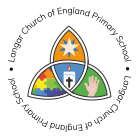Chicken Pox
We have Chicken Pox in school. Please be vigilant.
This information is form the NHS website:
Chickenpox is common and mostly affects children, but you can get it at any age. It usually gets better by itself after 1 to 2 weeks without needing to see a GP.
Check if it's chickenpox
An itchy, spotty rash is the main symptom of chickenpox. It can be anywhere on the body.
Chickenpox happens in 3 stages. But new spots can appear while others are becoming blisters or forming a scab.
Stage 1: small spots appear
The spots can:
- be anywhere on the body, including inside the mouth and around the genitals, which can be painful
- spread or stay in a small area
- be red, pink, darker or the same colour as surrounding skin, depending on your skin tone
- be harder to see on brown and black skin
Click link for images - Chickenpox - NHS (www.nhs.uk)
Stage 2: the spots become blisters
The spots fill with fluid and become blisters. The blisters are very itchy and may burst.
Stage 3: the blisters become scabs
The spots form a scab. Some scabs are flaky while others leak fluid.
Other symptoms
Before or after the rash appears, you might also get:
- a high temperature
- aches and pains, and generally feeling unwell
- loss of appetite
Chickenpox is very itchy and can make children feel miserable, even if they do not have many spots.
The chickenpox spots look the same on children and adults. But adults usually have a high temperature for longer and more spots than children.
It's possible to get chickenpox more than once, but it's unusual.
Stay off school or work
You'll need to stay away from school, nursery or work until all the spots have formed a scab. This is usually 5 days after the spots appeared.

